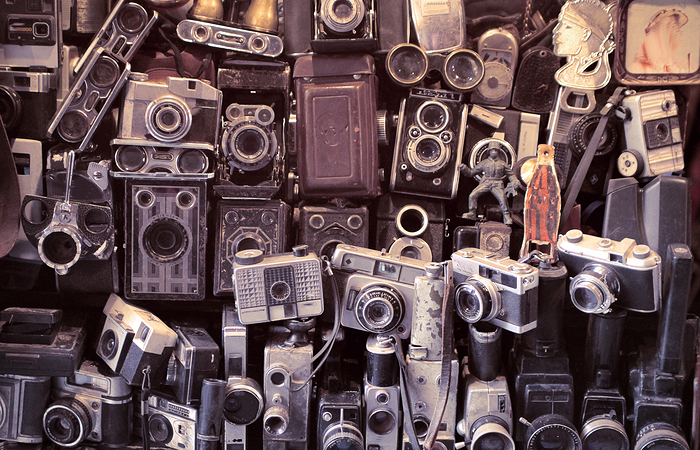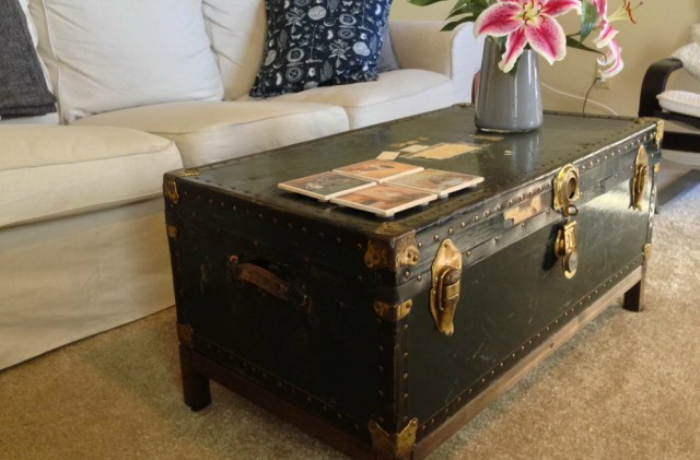Auction room: the ultimate recycling machine

Auction-related TV programmes have never been more avidly watched. Despite their new-found popularity, auction rooms represent one of the oldest recycling and reuse mechanisms.
Matt McGeehan CA reflects on his first visit to an auction and explores their environmental benefits.
Everyone watches TV programmes such as ‘Flog It!’, ‘Bargain Hunt’ and ‘Antiques Road Trip’, and dreams of uncovering a trinket that makes thousands of pounds at auction. The excitement of the televised auction room is infectious and many of us have added an auction to our bucket list of things we must do.
I went to our local auction room searching for the thrill of the bid and maybe a bargain or two. However, what struck me most was that the auction room represents a really efficient reuse and recycling machine.
In terms of sustainability, the auction room is a really efficient reuse and recycling machine; diverting waste from landfill and feeding a range of downstream supply chains.
Many of the lots up for auction come from house clearances. For homeowners, this can be a less costly disposal route than hiring a skip and avoids the time and effort of trying to sell items individually. From an environmental point of view, this diverts large volumes of potentially valuable resource from landfill.
A few lots appear to be ex-display goods from high street retailers. As high street consumers, we insist on perfection and are often unwilling to buy retail goods with even slight imperfections. However, when we ‘win’ the same goods at auction, we start to see them as unbelievable bargains.

The auction catalogue contains a staggering variety of items from the very old to the nearly new, from the very valuable to the trivial. Although the lots are a real mixed bag, the auction quickly diverts them into several distinct reuse and recycling streams.
Furniture dealers pick up large items such as wardrobes to re-sell on the high street. Vintage camera equipment gets snapped up by specialist enthusiasts. Artists pick up quirky items for background props. Specialist collectors pick up ceramics and jewellery. First-time homeowners bid on furniture and white goods to furnish their houses for a fraction of the retail cost.
Upcycling is the new buzzword
There are real bargains to be had and real money to be made. Many in the room obviously make a living by sourcing items at auction and selling them one step down the supply chain - with a healthy margin added.
The newest buzzword in the environmental lexicon is “upcycling”; where an old item is given a new lease of life, perhaps for a completely different purpose. The auction room provides excellent upcycling opportunities: an old steamer-trunk can be given a new life as a coffee table, an old picnic hamper can become a bedlinen chest and old leather-bound books can become interior design props for pubs and restaurants.

You may be wondering what I bought at my first auction and why. Well, I bought a variety of things for a variety of reasons. My son has just bought his first house and I bought him a new tumble dryer for a fraction of its retail price. I bought a carved Chinese table which was just too good a bargain to pass and I also bought a display cabinet which matched our lounge furniture.
Some of my purchases were strategically planned from the catalogue. Others were unashamed impulse buys. Whichever type of buyer you are, the buzz is addictive and your first auction is unlikely to be your last!
A thrilling way to help the planet
Everyone should go to an auction room at least once. There is an excitement and immediacy which you don’t get from a web-based equivalent. The sheer variety of lots on offer provides endless fascination.
There are bargains galore and you could almost furnish a house in the space of an hour. In terms of sustainability, the auction room is a really efficient reuse and recycling machine; diverting waste from landfill and feeding a range of downstream supply chains.
Finally, the auction room has a very simple global message for us. Many of the lots in the room were over a hundred years old. Handling such old objects makes one realise that we can never really own them; we are just their custodians for a while.
In the same way, we can bid for the planet’s resources but we never own them – we must safeguard them for a while before passing them on to the next generation.
Matt McGeehan CA is a Technical Adviser at ICAS.

 By Matt McGeehan CA
By Matt McGeehan CA